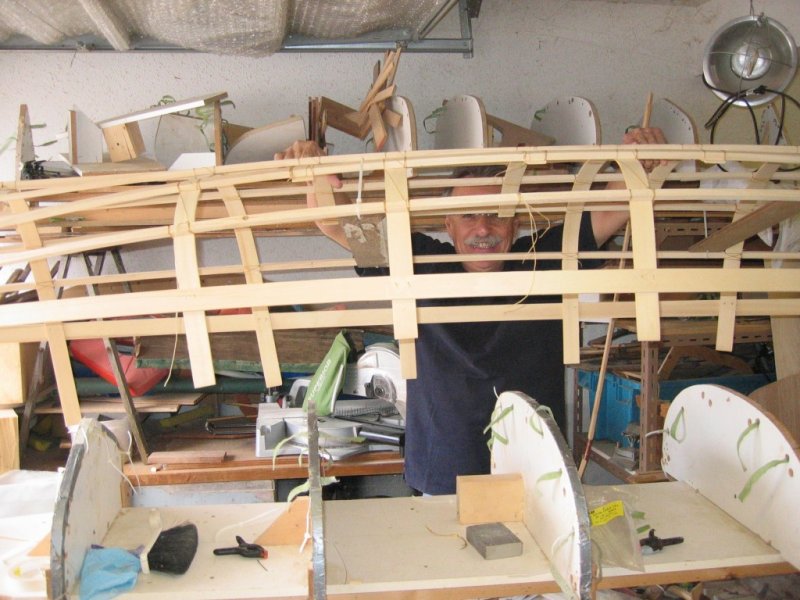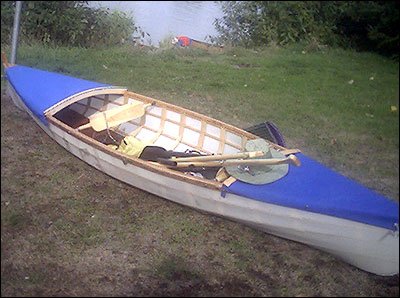 We don't do nearly enough on boating and boat building. I have been lucky to have met a few keen boat builders and craftsman over the years who have an amazing ability and a patience for woodworking I can only admire.
We don't do nearly enough on boating and boat building. I have been lucky to have met a few keen boat builders and craftsman over the years who have an amazing ability and a patience for woodworking I can only admire.
If you have never built boats or worked on boats or renovated boats, I can tell you one thing that you probably don't know, and that is ... when you work on boats, no 2 pieces are alike. That is almost a guarantee. Every part of the boat is slightly different, that's just the way it is.
I seem to have re-awakened my boating desires lately and am investigating some of my options. I am looking for something that is light weight and that I can use in local rivers, lakes, and of course in the ocean. It should hold 2 people, but for those time I want to take the boar out alone, it needs to have that capability too and not be to much for me to handle, oh and did I mention it needs to be pretty rugged to withstand some of the places I want to go? All these are reasons why I wanted to see more about dreamcatcherboats.com
Make Your Own Boat - Skin On Frame Boats
One of the boats I was interested in was from someone I met at one of the wood shows in past months, who introduced me to the skin-on-frame type of boat construction, something I knew nothing about, so I thought why not take the camera, go and visit Brian and even make a video about it while I am there?
Brian's business is located beside Telus Science World in Vancouver, which, as you can see from the pictures is a cool looking building and a great place to visit, and you can pop around to see Brian and his boats too.

The skin on boats, were invented in the late 1800s according to Brian and basically consist of a wood frame with some sort of a skin stretched over the frame, fastened down securely then coated with some sort of water proof sealing coating. The skin material that Brian is using is ballistic nylon. That's the same stuff they use to make bullet proof vests. The stuff is incredibly strong, and once it is coated with a water proof varnish it's tough, light weight and it looks good.
Brian had a couple of boats in the process of construction as he in just finishing up a couple of courses that he gives on how to make these boats. The coarse as I understand are only 2 - 3 days, like over the a couple of weekends a group of novice boat builders actually make one of these boats from beginning to end. 
When looking at the boats I noticed that all the wooden frame pieces were lashed together with some sort of special looking twine. Brian explained that it was actually stronger than using nails and also helps to give the boat more flexibility in the water. The completed boats are very strong even though they don't weigh much which is clear when you can see the wood frame construction through the ballistic nylon cover. I also asked Brian about the coating, I expected he would tell me that he was using a marine varnish, but to my surprise, he uses water based varnish because it drys so quickly and is actually harder than marine varnish and clearly the flexibility of the boats is not an issue for it.
You have lots of different options for getting one of these boats, you can contact Brian and get in on one of his boat building courses if you live in the lower mainland of British Columbia, if you live elsewhere, you can order up the a some of the different kits he provides, or just simply the plans or ballistic nylon skin material.

If you have never been involved with boating, kayaking or water craft I can tell you there is nothing like it. Once you try it, you will be come a fan for life, even if, like me you have given it up for a few years, you always come back to it ... I can see now why Brian does what he does.
Check out the Dream Catcher Boats website, or visit their YouTube Channel for more on these interesting skin on frame boats.
Copyright - Colin Knecht
Woodworkweb.com
